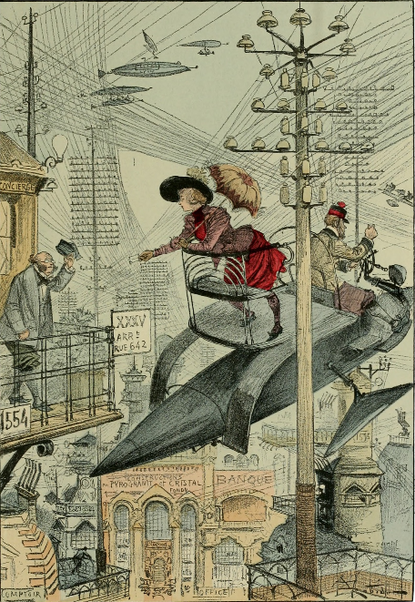The Evil shall defeat The Good (Art vs Donbass)
At the end of August Donetsk has seen a cultural revolution, the repercussions of which cannot be estimated at this point of time. On August 26th two completely different projects in two completelly different spaces opened their doors for the viewers, the first seeming to be a light at the end of an ‘art-tunnel’, and the second – a path back into the darkness. Now only time will tell if these apprehensions are true.
The setting: today’s Donetsk, which breaks all the stereotypes that one might have about it: clean streets, new transportation system, preparation for the Euro-2012 – the city is marching towards European standards with confidence – a change that is quite rare for Ukraine. Unwillingly a phrase from Ilya Isupov’s latest project – “Donetsk – a city of million roses’ – comes to mind, as well as the fiercely hated by Alexander Roitburd, but undoubtelly present in philistine language, expression ‘kinda nice’. And despite the ever-present distaste, which one notices through weird ‘European-style renovation’ of every second house and the emerging of Arena-, Centaurus-, and many other ‘Plazas’, one gets an impression that something really positive is happening in this country. Since, especially, in order to be happy, we, the people, are not asking for too much: just a little bit of cleaning-up, both on the streets and the minds of individuals.
The anticipation of something positive, created by the first impression of the city, was only enhanced by the opening of Cài Gúoqiáng’s show ‘1040 meters under the surface of Earth’.
A former insulation materials factory which is now home to the ‘ISOLATION’ Cultural Initiatives Platform in Donetsk.
This project was initiated by the ‘ISOLATION’ culture initiatives platform, which opened in 2010. It is a non-profit foundation which aims at creating an interdisciplinary cultural center engaging in projects of both social and cultural significance.
The space, which is now housing the project, used to be an insulation materials factory, hence the name – ‘ISOLATION’. But there are more reasons to that than just the history of the location. First of all, it is usually the case that non-central parts of the country are in a way cut off from the ‘main’ city, and it is through the emergence and activity of such projects as ‘ISOLATION’ that we might see a decentralization of cultural activity. Second of all, for a city like Donetsk, ISOLATION’s projects – both form- and content-wise – are really new and considered part of the cultural ‘underground’, which, nonetheless, could and should be the driving force for socio-cultural change.
It is worth mentioning that such a choice of location coincided with the pan-European trend of both postindustrial society repositioning and searching for new ways of engaging with cultural heritage. Creating an international identity, while, at the same time, preserving a certain degree of cultural originality, seems to be the concern of the cultural sphere today. For example, Cuauhtémoc Medina, the curator of the next European Biennial of Contemporary Art, has chosen an old Limburg (Belgium) coal mine as its location.
Cài Gúoqiáng. Monuments on Shoulders, 2011. (Exposition fragment)
The curatorial and organizational level, on which the ‘Cài Gúoqiáng – 1040 meters under the surface of Earth’ project is done, is so high, that upon entering the space one doesn’t necessarily make out the connection to the topic of the day. Here one can feel and understand the works in which the history of both the artist and his people comes through and gives itself to being put into local (Donbass) context. It is only with time that the feeling of dissonance between the concept and methodology of the show and the contradicting realities of Donetsk starts to overpower the viewer.
Cài Gúoqiáng. Monuments on Shoulders, 2011. (Exposition fragment)
But enough about the show itself – the reader can easily find the article dedicated to it on the pages of ART UKRAINE. What is most important is the understanding of the concequences and importance of the emerging of a art institution, that can not only point yo local cultural and social problems, but also bring them up onto a global level. The founding of an organization like ISOLATION, which gives funding not only to the cultural, but also the social sphere, is an immensely important event despite the many ‘buts’ possibly caused by either of its projects.
Now, this was that ‘light at the end of the tunnel’ that we talked about at the beginning. The dreams of an upcoming cultural revolution were quickly crashed by another project, the opening of which coincided with the opening of the Cài Gúoqiáng show.
The art and exhibition center ‘Art-Donbass’ opened its doors for viewers simultaneously with the show at ISOLATION. Only, in contrast to the latter, this space in far from isolated, but is located in one of the central parks of the city, right next to the pride and glory of Donetsk citizens – the ‘Donbass Arena’. Among the gallery’s founders was the Donets City Council, and this could have been a good thing if the Council just took care of funding and left the curatorial and artistic parts of the affair to professionals.

“In the European-style spacious modern of the city gallery (about 1500m2) visitors can both enjoy and buy art of their liking” – quote from the press-release of the gallery.
True, the interior of the hall is really done in the best tradition of the ‘European-style’, the space is generously filled with ‘important works of 34 painters and sculptors', right next to which, following in the footsteps of propaganda, wide-screen TVs present the viewers with video-clips about the region’s sports and city beautification achievements. As a soundtack to this happy scene, one hears classical music.
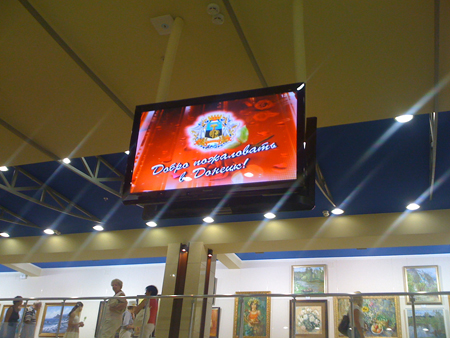
‘Art-Donbass’ art and exhibition center
The level of popularity this place can be compared to PinchukArtCentre (Kyiv), but there is one huge difference: Pinchuk’s projects are really interesting and professional and never promote bad taste.
Bad shows are a wide-spread phenomenon, so why write about them? Well, the aim which Art-Donbass pursues is to present the viewer with a rounded-up picture about art, since, as the director of the gallery put it “Donetsk is lacking in this sphere’. And as a result we see a gallery that reflects a local deputee’s understanding of the arts: portraits of Michele Platini and other ‘heroes’, framed in gold, with EURO-2012 logos on them. A peculiar thing: the visitors gladly take photos next to the works and express their fascination with them.

“The main monument of the city presents a gift to EURO-2012”. Collective work.
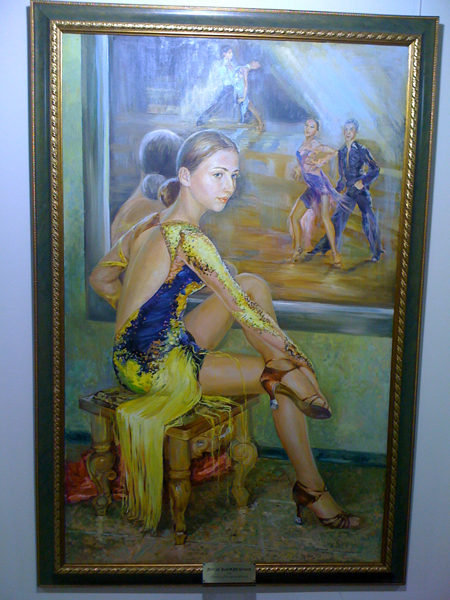
Tatiana Ponomarenko-Leverash. ‘After the Show’, 2005
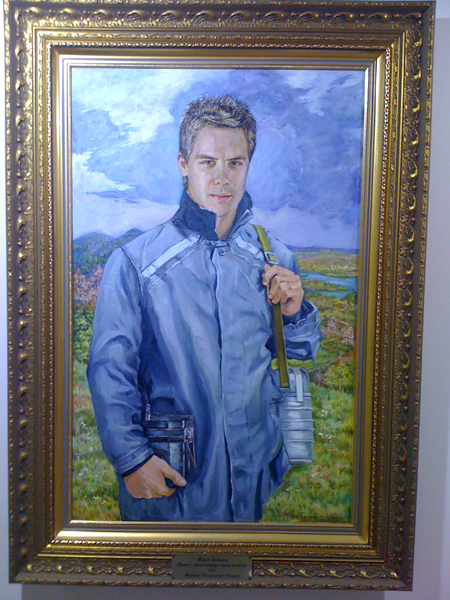
Tatiana Ponomarenko-Leverash. ‘A young man in the Donets steppe’. 2007.

Tatiana Ponomarenko-Leverash. Goalkeeper. 2008.
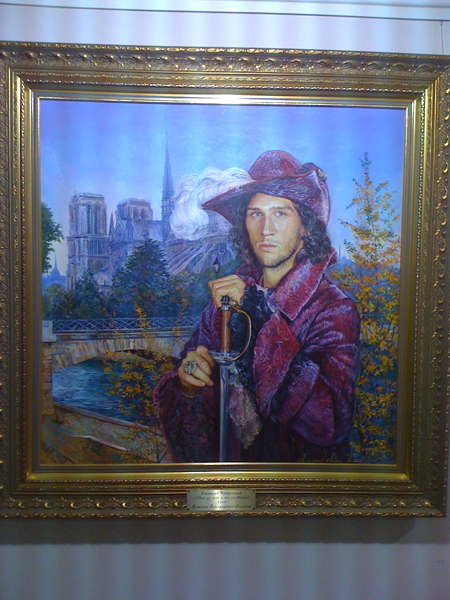
Tatiana Ponomarenko-Leverash. One for all and all for one. 2000.
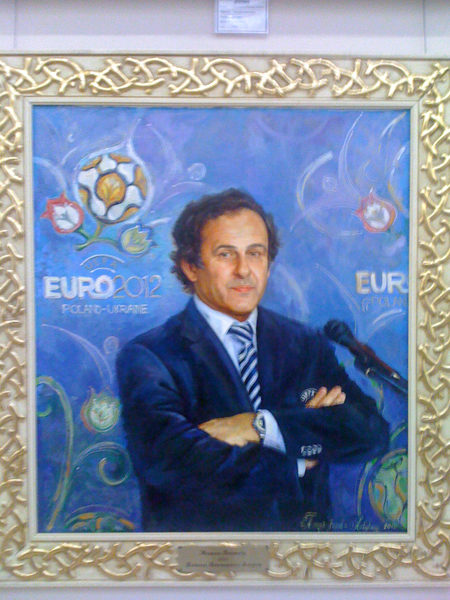
Tatiana Ponomarenko-Leverash. Michele Platini.
The saddest part of the story is that while ISOLTAION became a huge step forward, Art-Donbass is like ten steps back. These are the Heaven and Hell of Donbass – the first one too good to be true, the second – way to bad.

Asia Bazdyrieva



